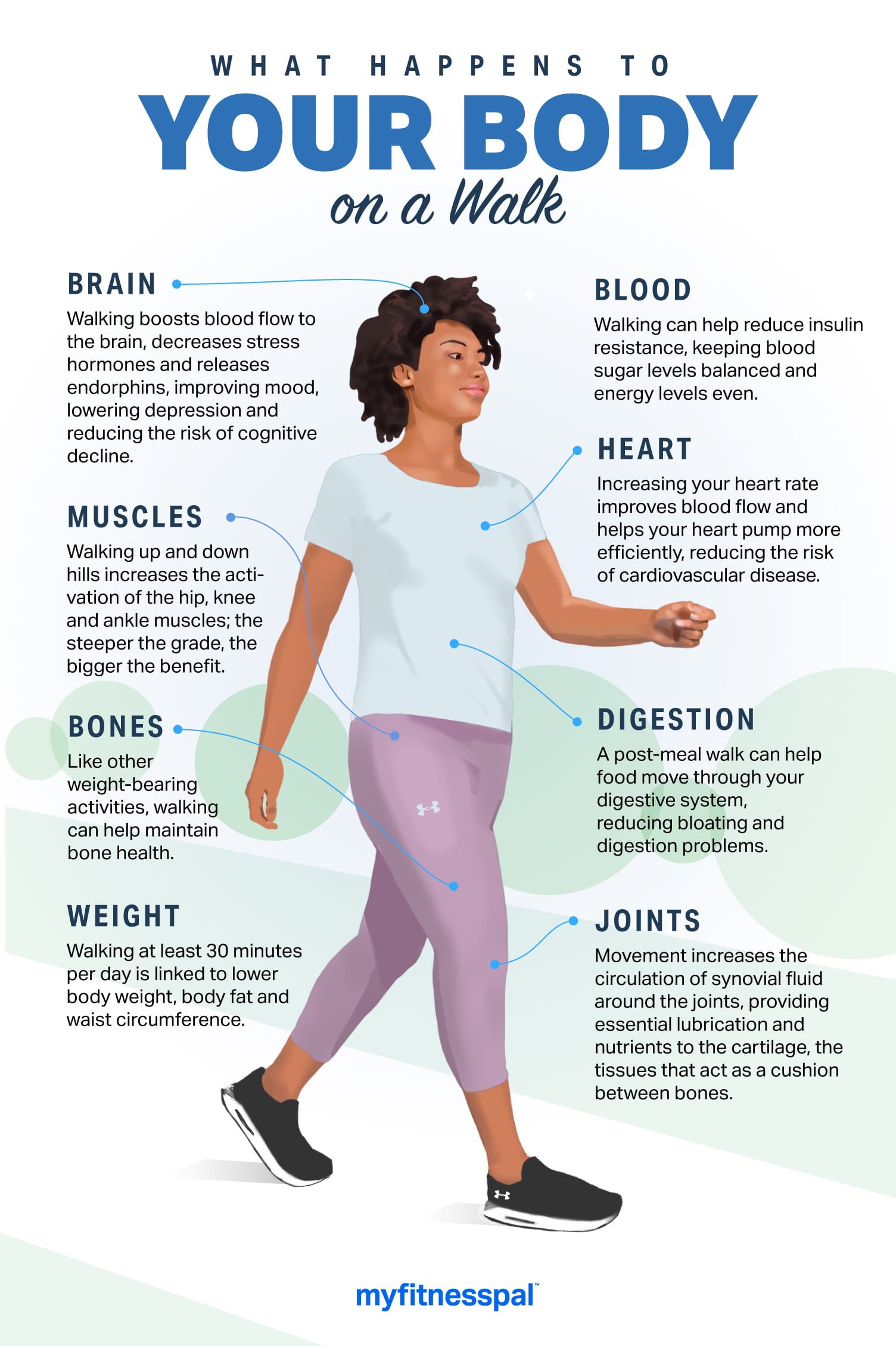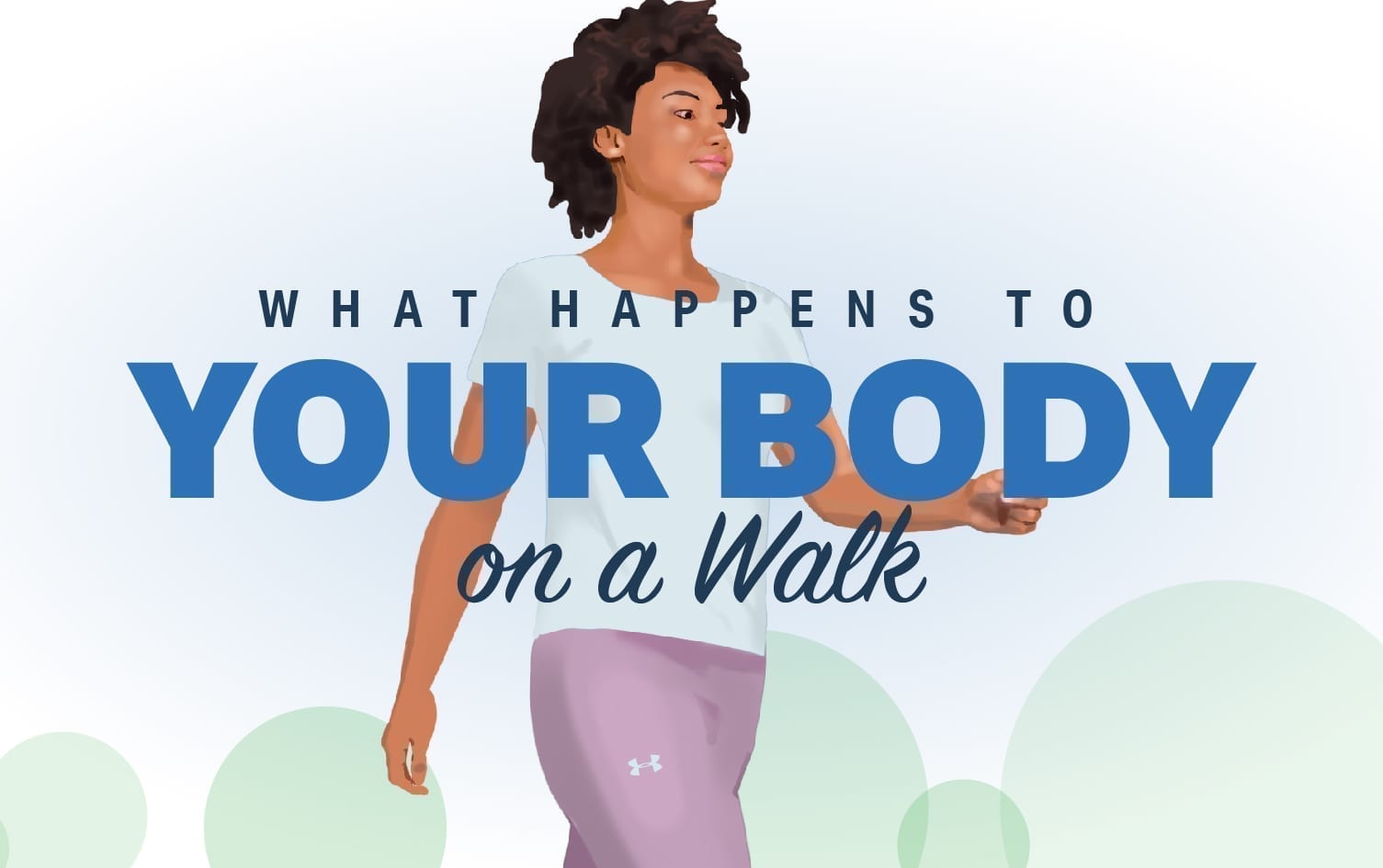In terms of exercise, walking is hard to beat. “Going for a walk doesn’t require any extra equipment or special instructors and it’s something you already do naturally,” says Matt Darnell, PhD, RD, assistant professor and director of the graduate sports science program at the University of Pittsburgh Medical Center. “Most of the physical activity research shows benefits from just moving more and sitting less [and] walking is a great low-impact way of moving and burning calories.”
Walking offers both physical and mental health benefits. Here is what happens to your body every time you lace up your sneakers and head out for a walk:

HOW TO GET STARTED
WEAR THE RIGHT SHOES
When you lace up your sneakers, make sure they are well-fitting, comfortable walking-specific shoes, advises Darnell. “A good pair of shoes will help you move better, decrease your chances of blisters and take some of the strain off your feet, knees and lower back,” he adds.
MAINTAIN A BRISK PACE
Picking up the pace not only burns more calories, compared to a slow stroll, but it could also help you live longer. “Count your steps over a 1-minute period to make sure you are walking at least 100 steps per minute (with a goal of increasing the pace to 130 steps per minute),” says Elroy Aguiar, PhD, American College of Sports Medicine member and assistant professor of exercise science at the University of Alabama.
READ MORE > 6 COMMON WALKING MYTHS, BUSTED
BUILD STAMINA
According to the American College of Sports Medicine (ACSM), individuals should aim to participate in a minimum of 30 minutes of moderate-intensity exercise per day or 150 minutes per week. If this seems daunting at first, don’t worry. “Remember the saying, ‘slow and steady wins the race?’” Aguiar asks. “Start by walking 30 minutes three times per week and build up from there.” If weight loss is your goal, you’ll want to continue to build to 200–300 minutes per week (a one-hour walk 4–5 days per week).
CHANGE YOUR TERRAIN
Sticking to the same route is a common walking mistake because over time your body adapts and it won’t be as challenging. To boost weight-loss (and keep things exciting) aim to vary the scenery a couple of days per week. For example, try a hilly trail, walk on the beach, explore a new park or do an urban hike. It boosts your motivation and keeps you mentally fresh, while simultaneously engaging different muscle groups to burn more calories.
FOLLOW A WALKING PROGRAM
Whether your goal is to lose weight, tone your body, blast belly fat or take part in your first 5K — we’ve got a program for you.
Make progress every day while you work on fitness and nutrition goals, like walking more steps. Go to “Plans” in the MyFitnessPal app for daily coaching and easy-to-follow tasks to keep you motivated.




